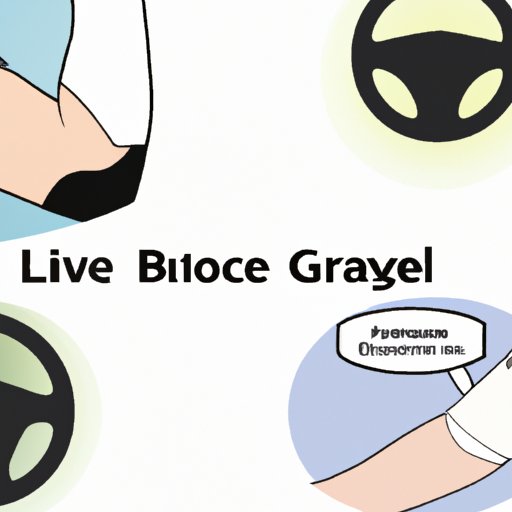Overview of Elbow Surgery and Driving Afterward
Elbow surgery is a common procedure used to treat a variety of conditions affecting the elbow joint. It’s typically recommended for those who are experiencing chronic pain or have suffered an injury that requires surgical intervention in order to repair it. Depending on the type of surgery, the recovery period can vary greatly, but one of the main concerns is when it’s safe to return to activities such as driving a vehicle.
Types of Elbow Surgery
The type of elbow surgery you undergo will affect the timeline for returning to normal activities. Common types of elbow surgery include arthroscopy, open reduction and internal fixation (ORIF), and total elbow replacement. Each type of surgery has a different recovery time, and the length of time needed to recover before you can safely drive again will depend on the procedure.
Potential Risks Involved With Driving After Elbow Surgery
One of the biggest risks associated with driving after elbow surgery is the potential for further injury if your elbow isn’t fully healed. If your range of motion or strength isn’t up to par, you may not be able to adequately control the vehicle or react quickly enough in an emergency situation. Additionally, if you experience pain while driving, it could distract you and lead to an accident.

Tips for Safe Driving After Elbow Surgery
Once you’ve been cleared by your doctor to start driving again, there are a few tips to keep in mind to ensure your safety:
Proper Posture
It’s important to maintain proper posture while driving. This means keeping your back straight and your elbows at a 90-degree angle. This will help to reduce strain on your elbow joint and prevent any further injury.
Adjustments to Vehicle
If you need to make any adjustments to your vehicle, such as moving the seat closer or farther away, or adjusting the steering wheel, do so before starting the car. This will help to reduce strain on your elbow joint and make driving more comfortable.
Pain Management
If you experience any pain while driving, stop and rest. Take a break until the pain subsides, then resume driving if possible. If the pain persists, contact your doctor for further instruction.
How Long After Elbow Surgery Can You Drive?
The amount of time it takes to recover from elbow surgery varies depending on the type of surgery and the individual’s healing process. Generally speaking, most people can start driving again 4 to 6 weeks after surgery. However, this is only an estimate, and it’s important to follow your doctor’s recommendations.
Timeline for Recovery
In general, the timeline for recovery looks something like this:
- 1 week post-surgery – Most patients can start light activities such as walking.
- 2 weeks post-surgery – Range of motion exercises can begin.
- 4 to 6 weeks post-surgery – Driving can usually be resumed.
- 6 to 8 weeks post-surgery – Strength training can begin.
Follow Doctor’s Recommendations
It’s important to follow your doctor’s instructions for recovery. Your doctor will be able to provide specific advice regarding when you can start driving again based on your individual circumstances.

What to Consider When Deciding When to Resume Driving After Elbow Surgery
When deciding when to start driving again, it’s important to consider several factors:
Level of Pain
If you’re still experiencing pain after elbow surgery, it’s important to wait until the pain has subsided before attempting to drive. Driving while in pain can be distracting, and can potentially lead to an accident.
Range of Motion
Your range of motion should be close to normal before attempting to drive. If your range of motion is limited, it could make it difficult to control the vehicle and react quickly in an emergency situation.
Strength
Your strength should also be close to normal before attempting to drive. If your strength is limited, it could make it difficult to control the vehicle and react quickly in an emergency situation.

What To Expect During Recovery From Elbow Surgery and How It Affects Driving
Recovery from elbow surgery can take several weeks, and during this time there are certain tasks that will need to be avoided. Physical therapy is often prescribed to help speed up the recovery process, and it’s important to follow the physical therapist’s instructions carefully. Additionally, there are certain side effects that may occur during the recovery process, such as swelling, stiffness, and decreased range of motion, that can affect your ability to drive safely.
Physical Therapy
Physical therapy is often prescribed to help speed up the recovery process. The physical therapist will provide exercises to help improve range of motion, strength, and flexibility. It’s important to follow the physical therapist’s instructions carefully to ensure a successful recovery.
Tasks That Will Need to be Avoided
During the recovery process, there are certain tasks that will need to be avoided, such as heavy lifting and strenuous activity. It’s important to follow your doctor’s instructions in order to ensure a successful recovery.
Possible Side Effects
During the recovery process, there may be certain side effects that can affect your ability to drive safely. These side effects include swelling, stiffness, and decreased range of motion. It’s important to monitor these side effects and consult with your doctor if they become severe.
Conclusion
Elbow surgery can be a lengthy and complicated process, and it’s important to follow your doctor’s instructions in order to ensure a successful recovery. Generally speaking, most people can start driving again 4 to 6 weeks after surgery, but it’s important to consider factors such as level of pain, range of motion, and strength before attempting to drive. By following your doctor’s instructions and taking the necessary precautions, you can safely resume driving after elbow surgery.
(Note: Is this article not meeting your expectations? Do you have knowledge or insights to share? Unlock new opportunities and expand your reach by joining our authors team. Click Registration to join us and share your expertise with our readers.)
